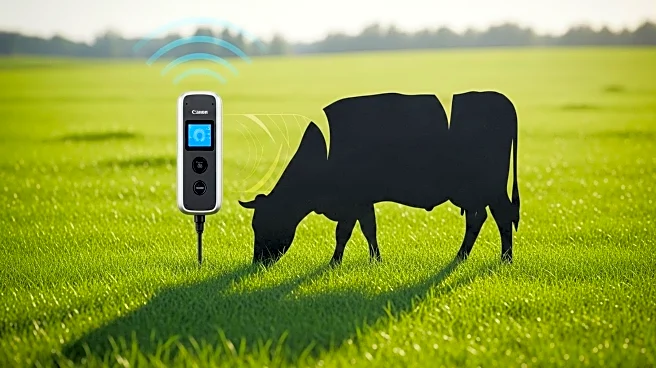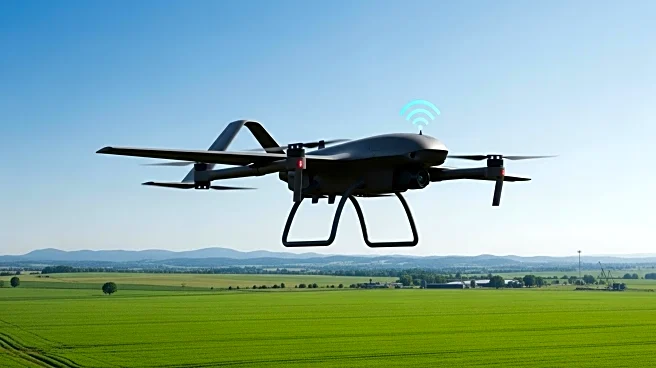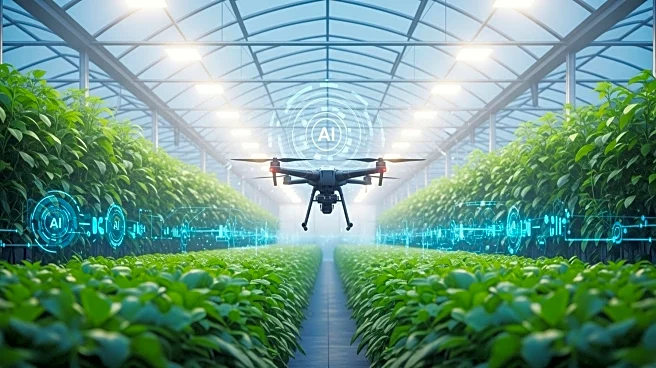What's Happening?
The global Smart Agriculture Livestock Monitoring market is projected to grow significantly, with a compound annual growth rate (CAGR) of 15.20% from 2025 to 2032, expanding from $2.1 billion in 2025 to $5.8 billion by 2033. This growth is driven by advancements in wearable livestock sensors, smart feeding systems, automated milking sensors, and GPS tracking systems. Major players in the market include Afimilk Ltd, Zoetis Inc, and Cainthus Ltd, among others. The market is expanding its reach across key regions, including North America, Europe, and Asia-Pacific, as agriculture becomes more technology-driven and data-oriented.
Why It's Important?
The expansion of the Smart Agriculture Livestock Monitoring market reflects the increasing demand for precision farming and efficient livestock management. As global meat consumption rises, the need for advanced monitoring systems to ensure animal health and productivity becomes more critical. The integration of IoT and sensor technologies in agriculture can lead to improved disease detection, breeding management, and overall farm productivity. This growth presents opportunities for technology companies to innovate and provide solutions that address the challenges faced by farmers, potentially transforming the agricultural industry.
What's Next?
The market is expected to continue its growth trajectory, driven by trends such as the use of wearable sensors and automated feeding systems. Companies are likely to focus on expanding their product offerings and enhancing integration with cloud-based analytics. The development of drone-enabled livestock monitoring systems is gaining traction, which could further modernize agriculture practices. As the market evolves, stakeholders will need to address challenges such as high equipment costs and connectivity issues in rural areas to maximize adoption.
Beyond the Headlines
The rapid growth of smart agriculture technologies raises questions about the environmental impact and sustainability of these systems. While they offer efficiency and productivity gains, the increased reliance on technology may lead to concerns about data privacy and security. Additionally, the shift towards automated systems could impact traditional farming practices and employment in rural communities, necessitating careful consideration of the social and economic implications.











